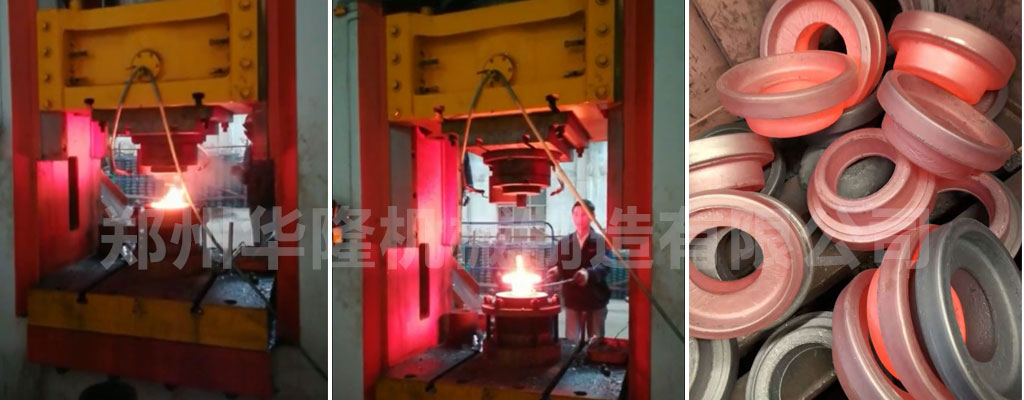The forging process of a tooth coupling
Author: haloong Time: 2018-12-14 15:03:23
Gear coupling refers to the internal and external gear teeth mesh to transfer torque. Because the top of the outer tooth of the semi-coupling is processed into a sphere (the center of the sphere should be located on the axis), and the meshing teeth have a large tooth side clearance, so that it has a good ability to compensate for the displacement of the two axes in any direction.
The customer is using HALOONG 1000 tons CNC forging press
1000T CNC forging press
|
Model
|
Nominal
pressure
(KN/T)
|
Max.
pressure
(KN)
|
Slide stroke
(mm)
|
Stroke No.
(mm)
|
Die set height
(mm)
|
Workatable
size
(mm)
|
Overall
size
(mm)
|
Motor
(Kw)
|
Weight
(T)
|
|
HLDS- 1000T |
10000/1000 | 20000 | 700 | 22 | 1255 | 1350*1100 | 5600*2640*6620 | 78*2 | 75 |

HALOONG's customer tooth coupling production site
The forgings of gear coupling should be forged on the forging press with enough tonnage, and the forging should have enough forging ratio to make the whole section fully forged so as to obtain uniform structure. The axis of the forgings shall correspond to the Central Line of the ingots. Forgings shall be formed by forging ingots or billets. Multiple scale forging is allowed and separation heat treatment is generally required.
Machining after performance heat treatment: after mechanical properties of tooth coupling are qualified, forgings are processed to the size and surface roughness specified in the drawing provided by the buyer. However, if the cutting amount of any surface exceeds 5mm, the forgings must undergo stress removal treatment.
Heat treatment after forging: gear coupling forgings should be preheated after forging to improve the microstructure and machinability. Roughing: roughing should be carried out before heat treatment of forging properties, leaving minimum machining allowance. Heat treatment of properties: forgings shall be quenched and tempered to achieve the desired properties.







